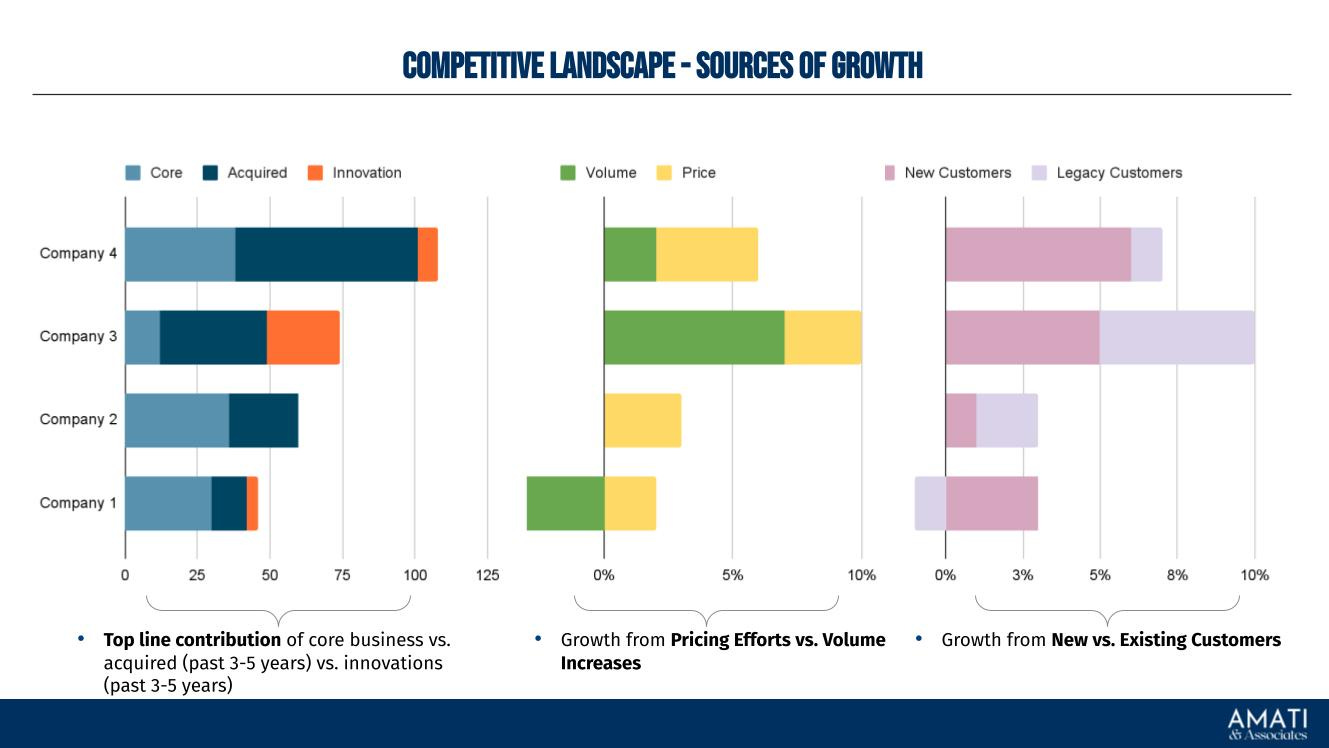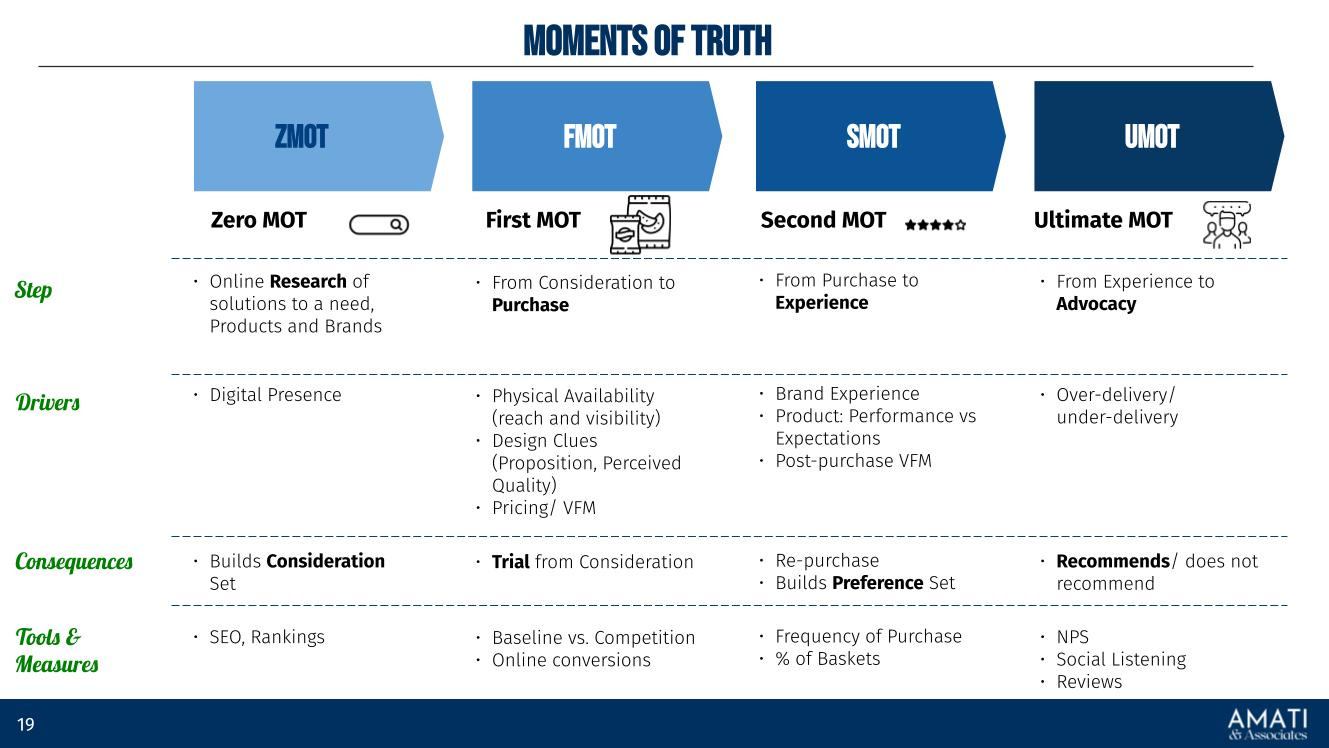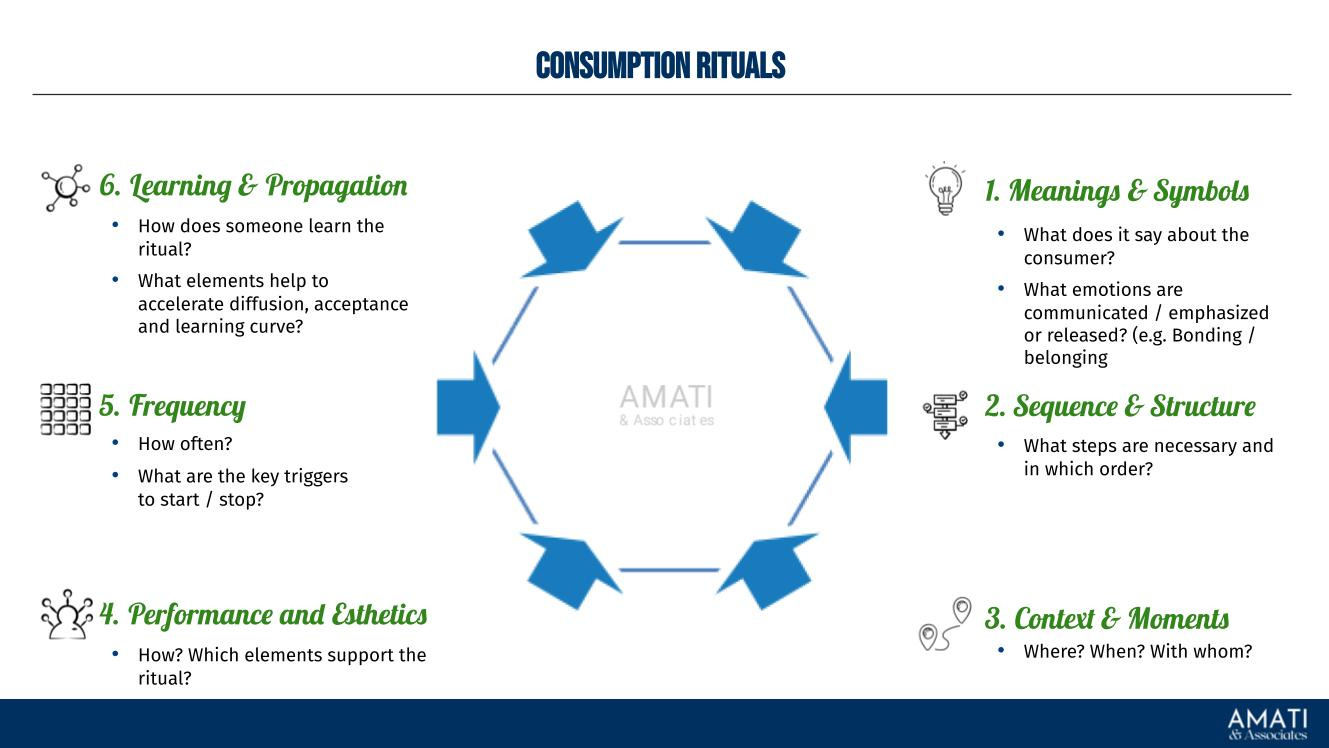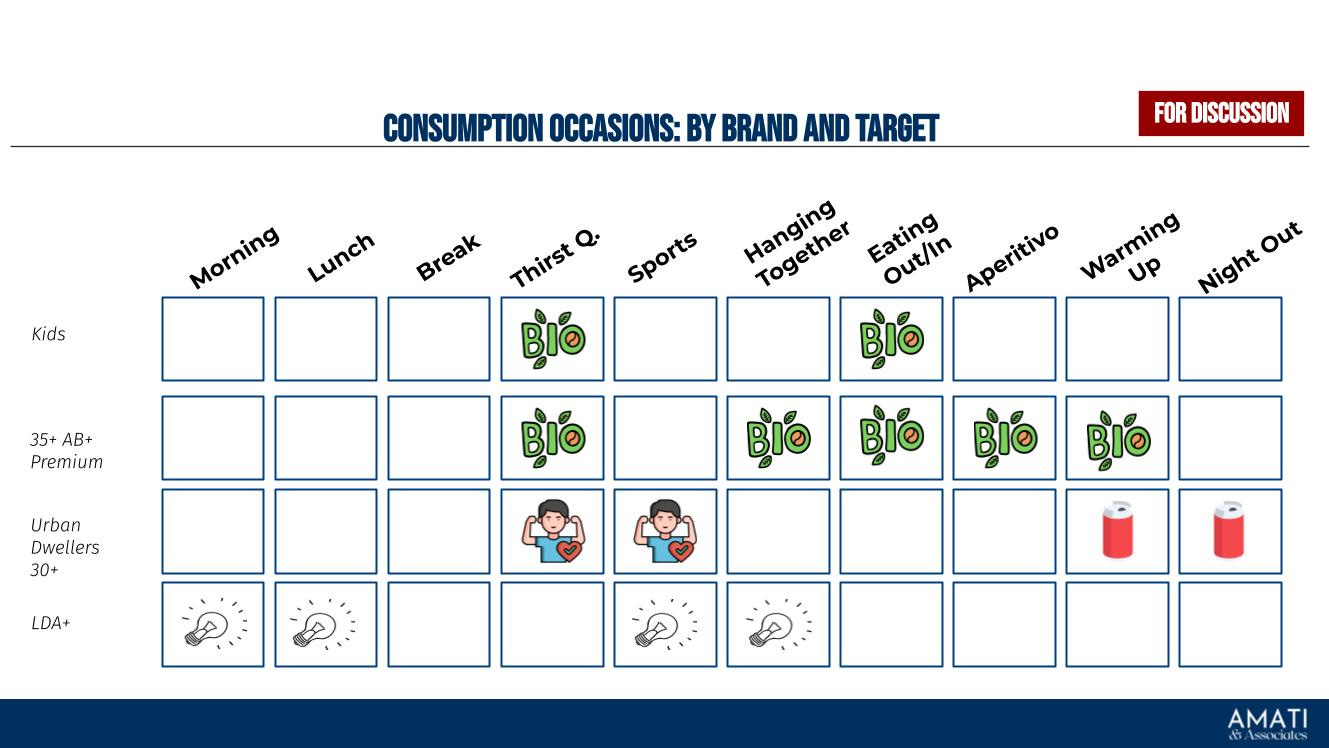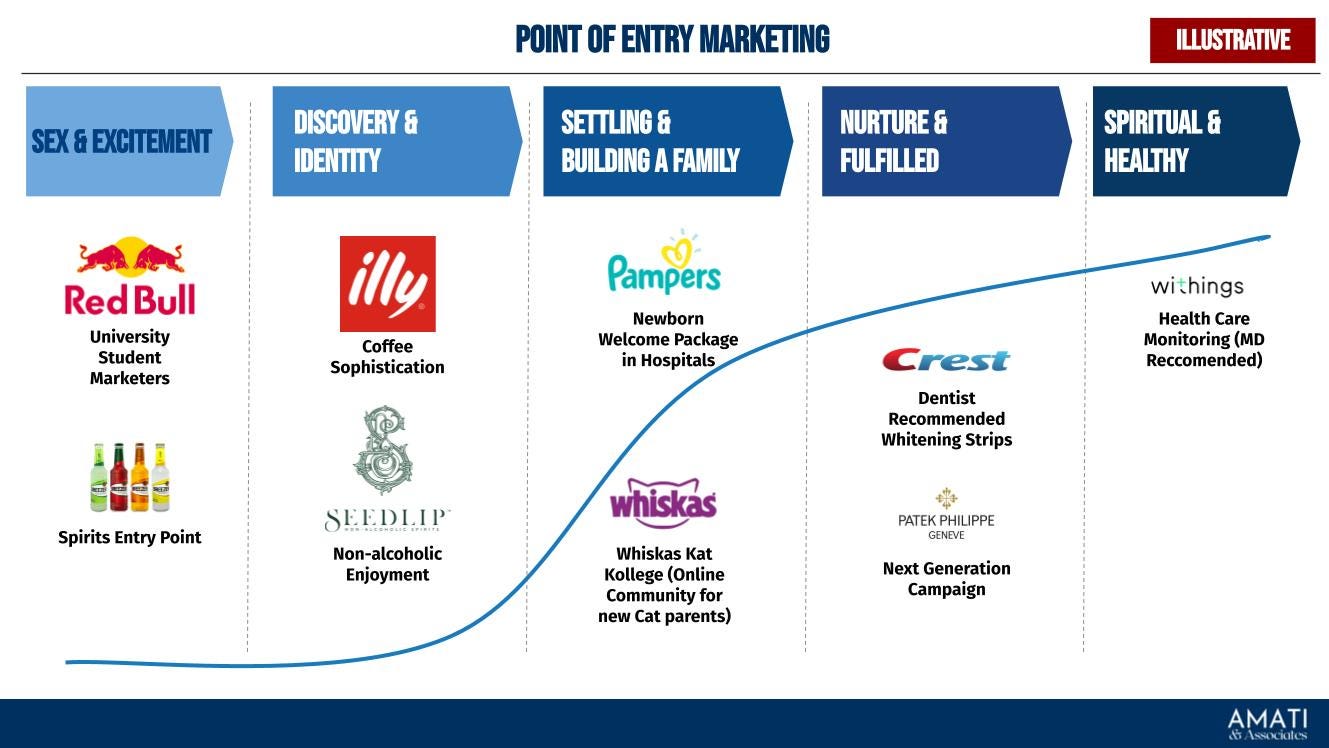From Survival to Thriving: 5 tools to upgrade your marketing game
(1) Competitive Landscape: Sources of Growth
How your competitors grow is an important measure that needs to be understood and internalized. Not because it needs to be replicated (not consistently) but because it provides an understanding of the current competitive playground. It defines, in strategic terms, the boundaries of the Red Ocean.
This analysis needs to address the following aspects:
The top-line contribution of core business vs. acquired (past 3-5 years) vs. innovations (past 3-5 years): more importantly, how much of the growth comes from acquisitions—which defines whether the industry is consolidating or not—or from innovation.
Growth from Pricing Efforts vs. Volume Increases: It is essential to understand what trade-offs your competitors are ready to make, especially during inflationary cycles like the current ones.
Growth from New vs. Existing Customers: in a simplified way, is growth driven by physical availability? Increased reach? Better visibility?
(2) Auditing the Moments of Truth
From being subject to an external stimulus to researching the brand and the product, from the consideration set to the actual first purchase, from purchase to experiencing the product and brand, and becoming an advocate, the consumer journey has many stages and gates. These pivotal moments, known as the "Moments of Truth," are crucial touchpoints where brands can win over or lose potential customers. Understanding and auditing these moments have become central to crafting successful marketing strategies that resonate with today's consumers.
Examples of ZMOT in Action:
Product Reviews and Ratings: Before purchasing a new smartphone, consumers read online reviews and watch comparison videos on YouTube. The information gathered during this phase influences their choice of brand and model.
Social Media Influence: A potential buyer discovers a new skincare line through influencer posts on Instagram. The positive mentions and demonstrations they see form a favorable impression, prompting them to seek more information on the brand's website.
Search Engine Queries: When considering a holiday destination, a traveler uses Google to search for the best places to visit, accommodation reviews, and travel tips. The search results, including travel blogs and review sites, guide their decision-making process.
Strategies for Optimizing FMOT:
Enhance Packaging Design: Invest in packaging that stands out and succinctly communicates the brand's values and the product's benefits. Use colors, textures, and imagery that attract the target demographic while ensuring the packaging is functional and user-friendly.
Optimize Placement: Work with channels to secure optimal locations for your products. In-store displays and end caps can also provide visibility and attract more attention to your products.
Improve Online Presentation: Ensure that your product listings online include high-resolution images from multiple angles, engaging product videos, and detailed, keyword-rich descriptions.
Leverage In-Store and Online Promotions: Use promotions, discounts, and special offers to entice potential buyers during the FMOT. Highlight these promotions prominently on product packaging and in online product listings.
Focus on Consumer Education: Provide clear information on product benefits, usage instructions, and additional value propositions through packaging inserts, in-store displays, or detailed online product pages and FAQs. Addressing any lingering consumer questions or concerns can help tilt the scales in your favor.
Tips for Ensuring a Positive SMOT:
Prioritize Product Quality: Improve your product to ensure it meets and exceeds customer expectations. Regular quality checks and updates based on customer feedback can help maintain high standards.
Play the expectations game: This stage is about performance vs. expectations. Even with the quality of the product, if the promises made are unreachable, the outcome of the experience will always be positive. To win at this stage, you must over-deliver your brand promise.
Solicit and Act on Feedback: Regularly gather customer feedback through surveys, social media, and direct communication. Use this feedback to make informed improvements to your product or service, demonstrating to customers that their opinions are valued and acted upon.
Create an Experience: Remember that the SMOT isn't just about the product or service but the overall experience of using it. Pay attention to packaging, unboxing experiences, and any additional touches that can make using the product feel special.
Foster a Community: Encourage customers to share their experiences and engage with your brand and other customers. This can be facilitated through social media, forums, or events, helping to create a sense of belonging and loyalty.
(3) Consumption Rituals
Consumption rituals elevate everyday moments into meaningful experiences. Unlike mere habits, these rituals involve a blend of routine actions and emotional engagement, turning the use of a product into a significant event. Here's the essence:
When consumers participate in rituals around a product, they perceive it as higher in quality and value.
Rituals, purposeful acts, introduce a satisfying anticipation to the consumption that heightens enjoyment.
Active participation in rituals, rather than passive observation, significantly boosts the pleasure derived from consumption.
The deep involvement required by rituals enhances enjoyment and imbues the consumption experience with greater significance.
This nuanced view highlights how rituals transform consumption into an enriching experience by integrating routine with emotion, deepening the consumer's connection to the product.
The Consumption Rituals Framework outlines seven dimensions to understand how rituals enrich consumer experiences:
Stars and Guest Roles: Identifies key ritual participants, from individuals to groups, highlighting their roles and characteristics.
Context and Moments: This section focuses on the setting and timing of rituals, emphasizing their purpose in transitioning consumer moods.
Meanings and Symbols: Explores rituals' contributions to community, order, and societal transformation.
Frequency: Considers how often rituals occur, impacting strategic marketing implications.
Sequence and Structure: Look at the detailed actions and sequences of rituals.
Performance and Aesthetics: Examines the role and design of ritual objects, enhancing symbolic meanings.
Learning and Propagation: Discusses how rituals are discovered, learned, and spread.
This framework helps marketers craft strategies that resonate deeply with consumers by aligning with their meaningful rituals.
(4) Category Entry Points
Situations or contexts prompting consumers to consider a specific product category. In the food and beverage industry, CEPS are usually called consumption occasions. For example, feeling thirsty might trigger thoughts of soft drinks or water.
CEPS Framework is made of the following Dimensions:
Persona: The leading actor, the target consumer.
Motivation: Their interest or purchase includes functional needs and emotional desires.
Emotion: The consumer's emotional state at the point of engagement.
Locale: The physical or digital space where the transaction or engagement occurs.
Companionship: Identifying if the consumer is alone or with others and what that implies for the buying decision.
Activity: What the consumer does during the engagement, providing context to the consumption.
(5) Point of Entry Marketing
When a consumer becomes open to a new product or category, often due to life changes, an example is starting a fitness regime, making someone more receptive to gym memberships or healthy foods.
These are typical questions necessary to identify a PME:
What life events or changes typically precede interest in our category or product? An example is a newborn for Pampers.
At what moments do consumers realize they need a solution like ours? Example: Planning to buy a house and mortgage brokers.
Which information sources do potential customers turn to first when seeking solutions in our category? Example: Wedding Makagines for wedding planners.
Which professionals recommend our category? Example: Healthcare prescription frameworks for health-related ailments.
Conclusion
Marketing landscapes continuously evolve; therefore, understanding and leveraging the right tools can transform survival strategies into thriving success stories. We believe in five critical tools—Competitive Landscape, Auditing the Moments of Truth, Consumption Rituals, Category Entry Points, and Point of Entry Marketing—which are essential for upgrading your marketing game. These tools are not just strategies but pathways to deepening connections with consumers, understanding competitive dynamics, and crafting memorable experiences that resonate on a personal level. These tools help in the short term but build better brands in the long term.
By dissecting the competitive landscape, we've seen the importance of growth sources, whether through innovation, acquisitions, or understanding consumer shifts. The Moments of Truth audit reveals the pivotal stages in the consumer journey, emphasizing the power of first impressions and the ongoing relationship between brand and consumer. With their rich emotional engagement, consumption rituals transform everyday use into meaningful experiences, enhancing perceived value and loyalty. Category Entry Points (CEPs) guide us in identifying when and why consumers consider certain products, enabling targeted and relevant marketing strategies. Lastly, Point of Entry Marketing focuses on capturing consumers at life-changing moments, offering solutions that fit seamlessly into their new realities.
Together, these tools offer a comprehensive framework for navigating and excelling in today's competitive marketing environment. By embracing these strategies, brands can move beyond merely surviving to truly thriving, creating marketing that doesn't just reach people but moves them. As we look forward, integrating these tools into your marketing arsenal will enhance your brand's resilience and ability to innovate and lead in an ever-changing market landscape.






